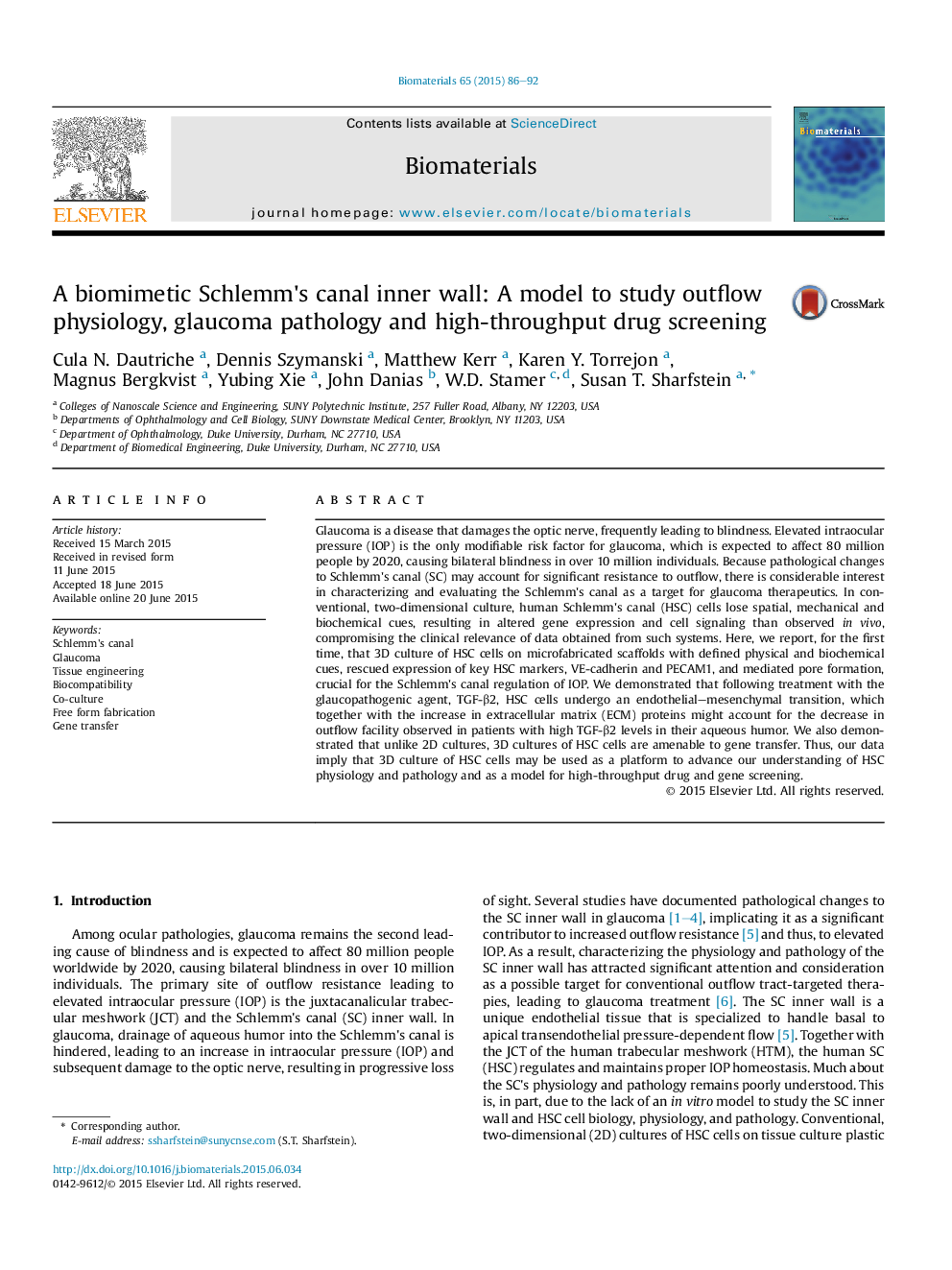| Article ID | Journal | Published Year | Pages | File Type |
|---|---|---|---|---|
| 5594 | Biomaterials | 2015 | 7 Pages |
Glaucoma is a disease that damages the optic nerve, frequently leading to blindness. Elevated intraocular pressure (IOP) is the only modifiable risk factor for glaucoma, which is expected to affect 80 million people by 2020, causing bilateral blindness in over 10 million individuals. Because pathological changes to Schlemm's canal (SC) may account for significant resistance to outflow, there is considerable interest in characterizing and evaluating the Schlemm's canal as a target for glaucoma therapeutics. In conventional, two-dimensional culture, human Schlemm's canal (HSC) cells lose spatial, mechanical and biochemical cues, resulting in altered gene expression and cell signaling than observed in vivo, compromising the clinical relevance of data obtained from such systems. Here, we report, for the first time, that 3D culture of HSC cells on microfabricated scaffolds with defined physical and biochemical cues, rescued expression of key HSC markers, VE-cadherin and PECAM1, and mediated pore formation, crucial for the Schlemm's canal regulation of IOP. We demonstrated that following treatment with the glaucopathogenic agent, TGF-β2, HSC cells undergo an endothelial–mesenchymal transition, which together with the increase in extracellular matrix (ECM) proteins might account for the decrease in outflow facility observed in patients with high TGF-β2 levels in their aqueous humor. We also demonstrated that unlike 2D cultures, 3D cultures of HSC cells are amenable to gene transfer. Thus, our data imply that 3D culture of HSC cells may be used as a platform to advance our understanding of HSC physiology and pathology and as a model for high-throughput drug and gene screening.
